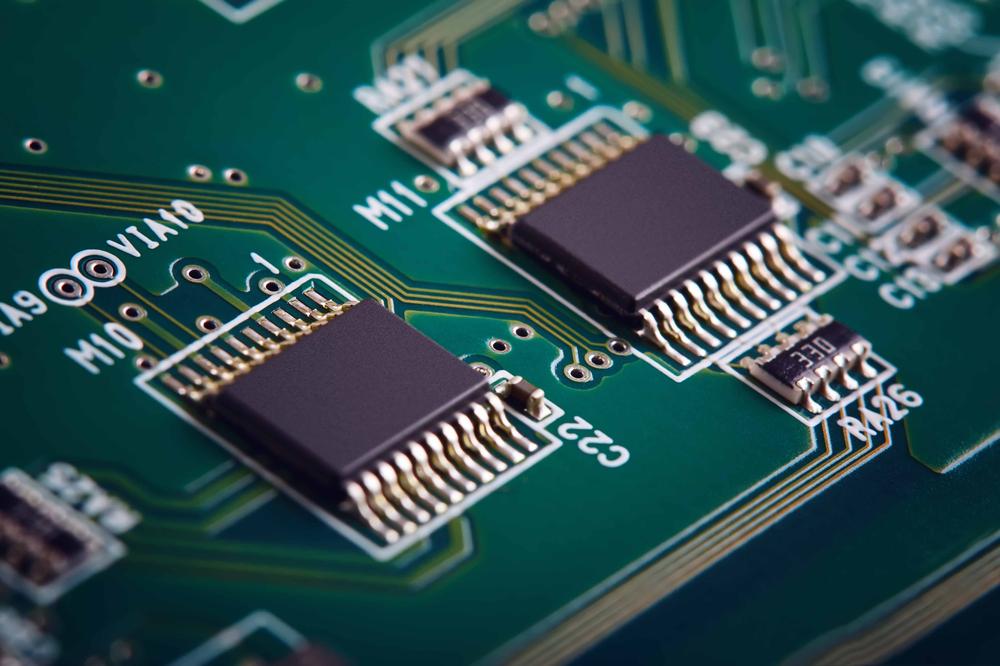
The B2B platform for the best purchasing descision. Identify and compare relevant B2B manufacturers, suppliers and retailers
Close
Filter
Result configuration
Continents
Select continent
Locations
Result types
Company type
Select company type
Industries
Select industry
Company status
Select company status preset
Number of employees
Min.
Max.
Founding year
Micron Technology
Boise, United States
B
10001+ Employees
1978
Key takeaway
Micron Technology is a leader in innovative memory solutions, offering a range of Dynamic Random Access Memory (DRAM) products that enhance performance and support various applications. Their commitment to cutting-edge design and technology positions them at the forefront of memory solutions for industries like AI, IoT, and data centers.
Reference
Product
DRAM | DRAM | Micron Technology
Micron DRAM solutions come with the performance leap you only get from a technology leader. Find the best memory components to fit your project.
Netlist
Irvine, United States
B
51-100 Employees
2000
Key takeaway
Netlist specializes in hybrid memory solutions that combine DRAM and NAND flash, highlighting their innovative products like the first load-reduced DIMM and the HybriDIMM, which is the industry's first Storage Class Memory product built on commodity DRAM and flash. Their strong patent portfolio underscores their expertise and leadership in the development of advanced memory technologies.
Reference
Product
Memory Module - Netlist Inc.

XUM Enterprise LTD
Manchester, United Kingdom
A
11-50 Employees
2012
Key takeaway
Dr Mem has established itself as a leading provider in the DRAM market, offering a wide range of memory options from DDR3 to DDR4, essential for optimizing gaming performance. Their expert team is dedicated to helping customers find the ideal RAM to enhance their gaming systems.
Reference
Core business
Gaming PC And Memory RAM Solution UK | PC Setup Dr Mem
Elevate your gaming PC Setup in Uk. Dr mem is the leaders in PC, desktop computer systems and peripherals, meeting all your gaming needs with excellence
Looking for more accurate results?
Find the right companies for free by entering your custom query!
25M+ companies
250M+ products
Free to use
Memphis Electronic
United States
B
101-250 Employees
1991
Key takeaway
MEMPHIS Electronic specializes in memory products, including a wide range of DRAM components from various manufacturers. With over 30 years of experience, they configure DRAM modules tailored to customer needs, ensuring access to the latest technologies and specific requirements throughout the product lifecycle.
Reference
Product
With us you will find DRAM components from numerous manufacturers
DDR, SDR, LPDDR, DDR1, DDR2, DDR3, DDR4, DDR5, Mobile DRAM, LPSDR, LPDDR, LPDDR2, LPDDR3, LPDDR4, Low Power
Micron Technology India
Hyderabad, India
D
1001-5000 Employees
2019
Key takeaway
The company is a world leader in innovative memory solutions, emphasizing their commitment to transforming how information is used. Their focus on continuous investment and innovation highlights their role in advancing memory technologies, which may include Dynamic Random Access Memory (DRAM).
Reference
Product
RLDRAM Part Catalog
Rambus
Los Altos, United States
B
251-500 Employees
1990
Key takeaway
Rambus focuses on developing advanced semiconductor and IP products, including memory solutions that enhance data center performance. Their commitment to increasing server memory and connectivity bandwidth is crucial for supporting sophisticated workloads like generative AI.
Reference
Core business
Rambus | Memory Interface Chips - Security IP - Interface IP
Dedicated to making data faster and safer, Rambus creates innovative hardware and services that drive technology advancements to data centers, IoT, AI and more!
Tekdis LLC - Industrial PCs Mobile Computing LCD/LED Displays AI & RF Solutions
Fremont, United States
B
1-10 Employees
2020
Key takeaway
Tekdis specializes in providing a wide range of embedded Dynamic Random Access Memory (DRAM) products, including DDR4, DDR3, DDR2, and legacy DDR/SDRAM, catering to various market needs and emerging technologies. Their commitment to high-quality technical support and professional selling procedures further enhances their offerings for OEM manufacturers and system integrators.
Reference
Product
DRAM | Storage & Memory - Tekdis
Tekdis offers a wide range of embedded DRAM including DDR4, DDR3, DDR2 and legacy DDR/SDRAM products features with many of the popular sizes/technologies.
RAAAM Technologies
United States
B
1-10 Employees
-
Key takeaway
RAAAM Technologies addresses the memory bottleneck in applications like AR/VR, Machine Learning, IoT, and Automotive with its innovative GCRAM technology, which offers significant area and power reductions compared to traditional SRAM. Their advancements in memory design could be particularly relevant for enhancing Dynamic Random Access Memory (DRAM) solutions.
Reference
Product
RAAAM Technologies | Technology
product portfolio High-Density GCRAM Macros Key Features Up-to 2X Higher density vs. SRAMUp-to 3X Lower power vs. SRAMStandard SRAM interfaceExtended
Data Memory Systems
Deerfield Beach, United States
B
11-50 Employees
1987
Key takeaway
Data Memory Systems (DMS) specializes in providing high-quality memory upgrades, including various types of DRAM such as DDR, DDR2, and DDR3, ensuring compatibility with both PC and Apple devices. With over 30 years of experience, DMS emphasizes customer satisfaction and offers competitive pricing on memory products.
Reference
Core business
DataMemorySystems.com - Computer Memory Upgrades, PC Memory, Apple Memory, Server Memory, Flash Memory, Hard Drives and More
Netram Memory GmbH
Wuppertal, Germany
A
1-10 Employees
1999
Key takeaway
NETRAM Memory specializes in providing a wide range of memory upgrades, primarily focusing on memory modules from leading original equipment manufacturers like Micron and Samsung. Their expertise and extensive product range may offer valuable insights into the availability and standards of Dynamic Random Access Memory (DRAM).
Reference
Core business
NETRAM | IT Elektronik Distributor
SFP / mini-GBIC GBIC SFP + memory, transceiver, OEM, cables
Technologies which have been searched by others and may be interesting for you:
Dynamic Random Access Memory (DRAM) is a type of volatile memory widely used in computers and other devices to store data temporarily. It stores each bit of data in a separate capacitor within an integrated circuit. Because the capacitors tend to leak electricity, DRAM must be refreshed thousands of times per second to maintain data integrity. This memory type is favored for its high density and cost-effectiveness, making it ideal for applications requiring large amounts of memory at lower prices. Commonly found in personal computers, laptops, and servers, DRAM plays a crucial role in ensuring fast data access and processing speeds, contributing significantly to overall system performance.
Dynamic Random Access Memory (DRAM) operates by storing each bit of data in a separate capacitor within an integrated circuit. These capacitors can either hold an electric charge (representing a binary "1") or be discharged (representing a binary "0"). However, the charge in these capacitors leaks over time, which necessitates periodic refreshing to maintain data integrity. This refresh cycle involves reading the data from the capacitors and rewriting it back to prevent loss. In terms of access speed, DRAM is slower than static RAM (SRAM) but offers a higher density, making it more suitable for applications requiring large amounts of memory, such as computers and servers. The architecture allows for random access, meaning that any memory cell can be accessed in approximately the same amount of time, regardless of its location in the memory array. This feature makes DRAM an essential component in modern computing systems.
Dynamic Random Access Memory (DRAM) is widely used in various computing devices due to its efficiency and speed. One primary application is in personal computers, where DRAM serves as the main memory, enabling quick access to data for running applications and the operating system. Additionally, it plays a crucial role in servers and workstations, supporting high-performance tasks by facilitating faster data processing and multitasking capabilities. Another significant use of DRAM is in mobile devices such as smartphones and tablets. Here, it enhances performance by providing the necessary memory for multitasking and running resource-intensive applications. Furthermore, DRAM is essential in graphics processing units (GPUs), where it aids in rendering images and video, ensuring smooth visual performance in gaming and graphic design applications.
1. High Speed
Dynamic Random Access Memory (DRAM) offers rapid data access speeds, making it an ideal choice for applications requiring quick read and write operations. Its ability to refresh data thousands of times per second ensures efficient performance in devices like computers and smartphones.
2. Cost-Effectiveness
Compared to other memory types, DRAM is generally more affordable to produce. This cost advantage allows manufacturers to provide larger memory capacities at a lower price, making it a popular choice for consumer electronics and enterprise solutions.
3. High Density
DRAM can store a significant amount of data in a relatively small physical space. This characteristic enables the development of compact and powerful devices that require substantial memory without sacrificing size.
4. Versatility
DRAM is utilized across various devices, from personal computers to servers and gaming consoles. Its adaptability to different applications enhances its demand in the market, catering to diverse computing needs.
Dynamic Random Access Memory (DRAM) is distinct from other types of memory primarily due to its structure and function. It utilizes a capacitor and a transistor to store each bit of data, which requires constant refreshing to maintain the stored information. This contrasts with Static Random Access Memory (SRAM), which uses flip-flops to store bits and does not need refreshing, making SRAM faster but more expensive and less dense than DRAM. Furthermore, DRAM is typically used for main memory in computing devices due to its higher density and lower cost compared to SRAM. While DRAM is slower than SRAM, it provides a good balance between speed, capacity, and cost, making it ideal for applications requiring large amounts of memory, such as computers and servers. In comparison, non-volatile memory types like Flash retain data without power but generally have slower write speeds than DRAM.
Some interesting numbers and facts about your company results for Dynamic Random Access Memory (Dram)
| Country with most fitting companies | United States |
| Amount of fitting manufacturers | 4491 |
| Amount of suitable service providers | 4472 |
| Average amount of employees | 51-100 |
| Oldest suiting company | 1978 |
| Youngest suiting company | 2020 |
20%
40%
60%
80%
Some interesting questions that has been asked about the results you have just received for Dynamic Random Access Memory (Dram)
What are related technologies to Dynamic Random Access Memory (Dram)?
Based on our calculations related technologies to Dynamic Random Access Memory (Dram) are Magnets, Printed Electronics, Industrial Amplifiers, Electronic Transducers, Electronic Oscillators
Which industries are mostly working on Dynamic Random Access Memory (Dram)?
The most represented industries which are working in Dynamic Random Access Memory (Dram) are IT, Software and Services, Other, Electronics and Electrical engineering, Computer Hardware, Consulting
How does ensun find these Dynamic Random Access Memory (Dram) Companies?
ensun uses an advanced search and ranking system capable of sifting through millions of companies and hundreds of millions of products and services to identify suitable matches. This is achieved by leveraging cutting-edge technologies, including Artificial Intelligence.